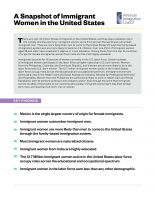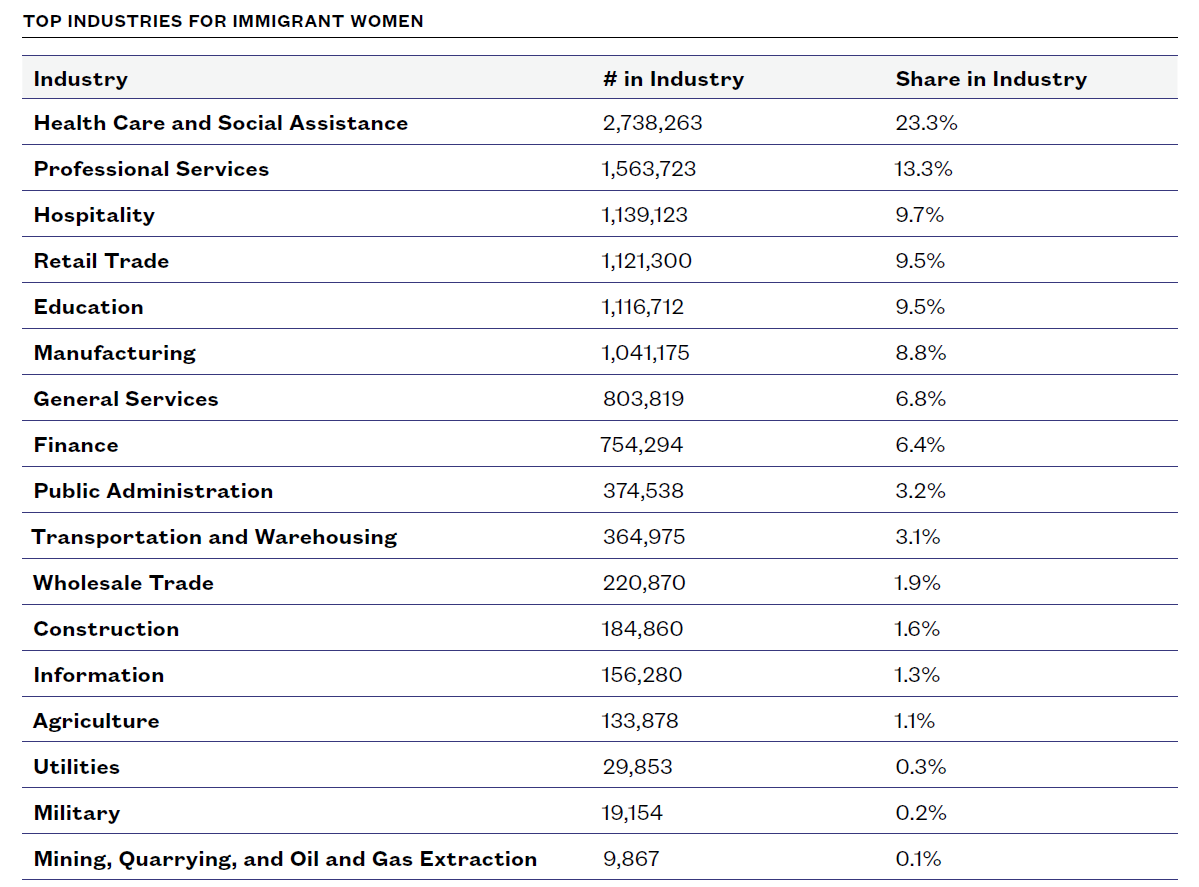- Fact Sheet
A Snapshot of Immigrant Women in the United States
Published
There are over 23 million female immigrants in the United States, and they play a valuable role in U.S. society and the economy. Immigrant women come from all over the world and outnumber immigrant men. They are more likely than men to come to the United States through the family-based immigration system and are more likely to become U.S. citizens. Over one-third of immigrant women aged 25 and older have a bachelor’s degree or more education. Among those from the top 10 countries of origin for female immigrants, women from India are the most highly educated.
Immigrants account for 16 percent of women currently in the U.S. labor force. Certain subsets of immigrant women participate in the labor force at higher rates than U.S.-born women. Women from the Philippines, Colombia, the Dominican Republic, and Vietnam are all more likely to be in the labor force than U.S.-born women. The 12.7 million immigrant women active in the United States labor force occupy roles across the educational and occupational spectrum. Immigrant women are particularly vital in the Health Care and Social Assistance industry, followed by Professional Services, and Hospitality. Women from the Philippines are particularly likely to work in Health Care and Social Assistance, with 42 percent working in this industry sector. Even though the work that immigrant women do adds critical value to our economy and society, immigrant women earn less than foreign-born men, and less than U.S.-born men or women.
Demographics
- Mexican-born women accounted for 22.1 percent of foreign-born women living in the United States in 2021, followed by India at 5.6 percent, the Philippines at 5.2 percent, and China at 5.1 percent.
- Showcasing the diversity of national origins, 45.6 percent of foreign-born women came from countries other than the top 10.
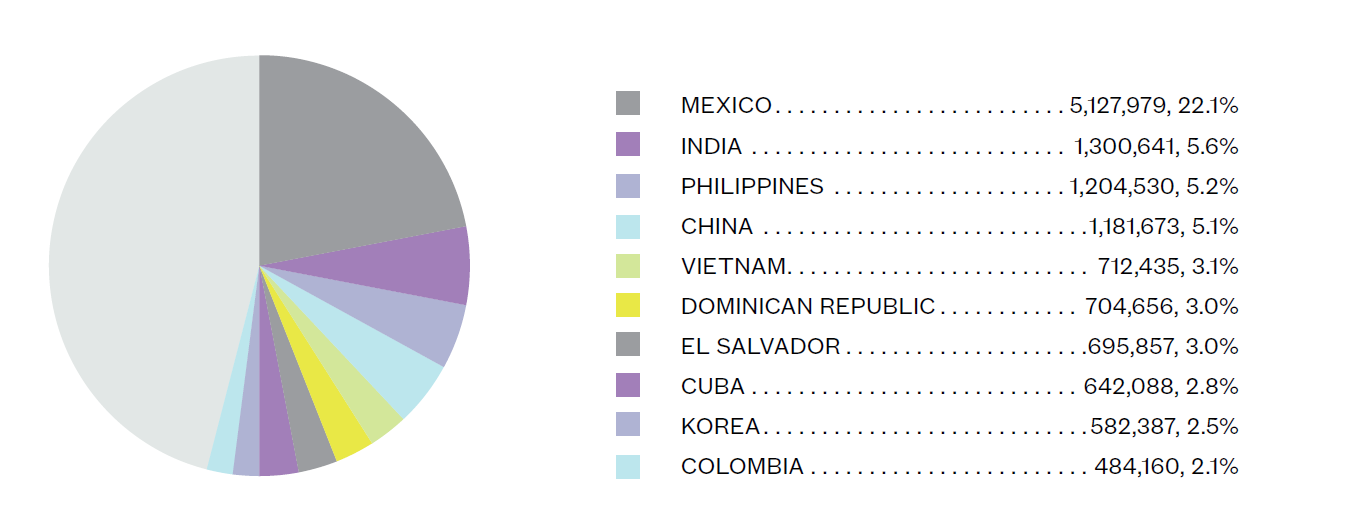
- There were 23.2 million female immigrants in the United States in 2021, accounting for more than half (51.3 percent) of the total foreign-born population.
- Immigrants accounted for 14 percent of the entire female population in the United States.
- Men outnumbered women among immigrants from Mexico and India, the two countries with the highest share of immigrants in the United States.

Citizenship + Immigration
Data from the Department of Homeland Security (DHS) indicate that female immigrants are more likely than male immigrants to come to the United States through the family-based class of admissions, rather than through employment.
- In Fiscal Year (FY) 2021, 228,555 women obtained lawful permanent resident (LPR) status because they were an immediate relative of a U.S. citizen, compared to 156,793 men.
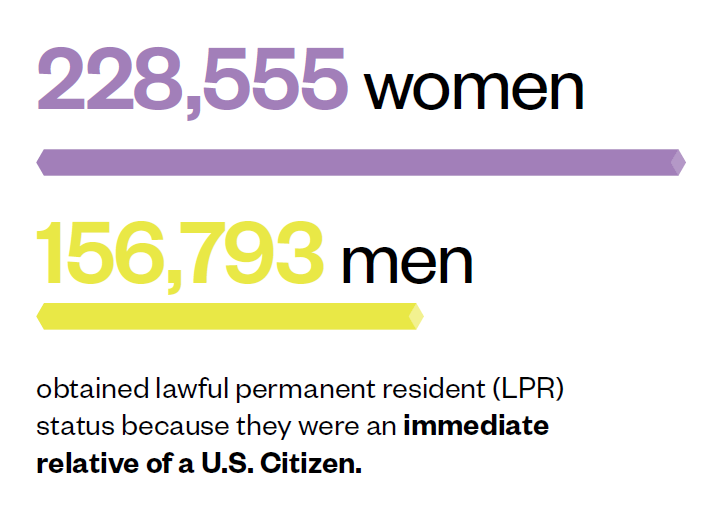
- In contrast, 99,990 men obtained LPR status under employment-based preferences, compared to 93,347 women.
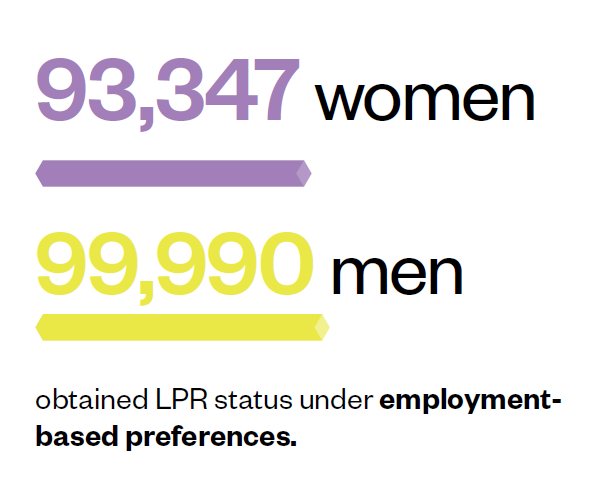
- Over half (54.8 percent) of immigrant women were naturalized U.S. citizens in 2021. This is a higher rate of naturalization than for male immigrants (50.1 percent).
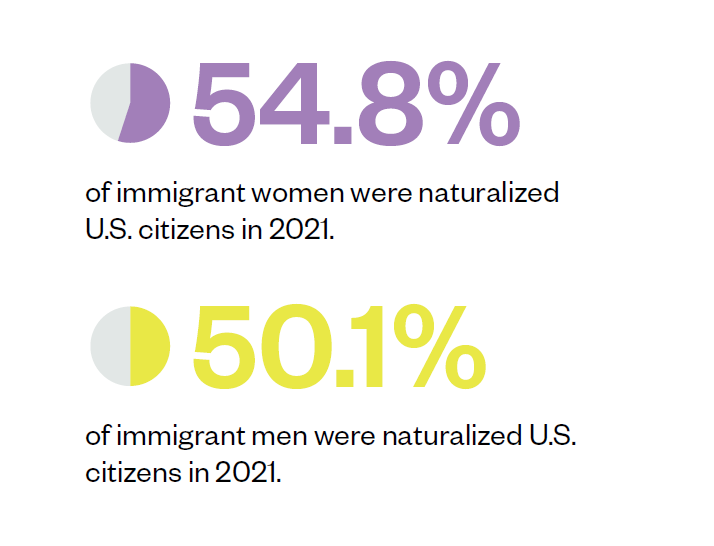
Naturalization rates differ by country of origin. Among those from the top ten countries, women from Vietnam are the most likely to be naturalized citizens (77.0 percent), followed closely by the Philippines (74.0 percent), Cuba (70.0 percent) and Korea (68.9 percent).
Female immigrants from China, Colombia, Cuba, the Dominican Republic, El Salvador, India, Korea, Mexico, and the Philippines become naturalized citizens at higher rates than men from the same countries.
Education
- Over one-third (33.9 percent) of immigrant women had a bachelor’s degree or more education in 2021, compared to 36.6 percent of U.S.-born women.
- Educational attainment of foreign-born women varied widely according to country of origin.
- Among the top 10 countries of origin for female immigrants, Indian-born women are the most highly educated, with 77.2 percent holding a bachelor’s degree or higher. In addition to those from India, women from Korea, the Philippines, and China are all more likely than U.S.-born women to have obtained this level of education.
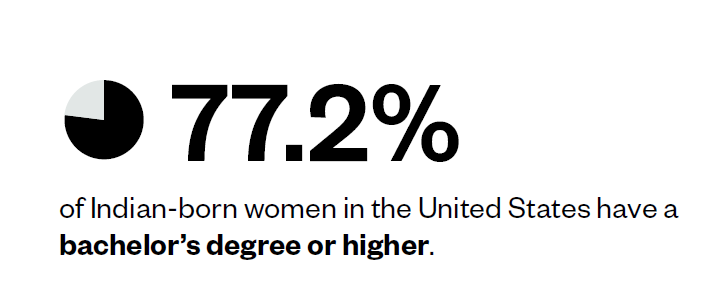
- Among the same group of countries, women from Mexico and El Salvador are the least likely to have obtained a bachelor’s degree or higher, both at 9.3 percent.
- Female immigrants from the Philippines, Cuba, the Dominican Republic, El Salvador, and Mexico had a higher percentage of bachelor’s degrees or higher than male immigrants from the same country.
- The share of immigrant women with a bachelor’s degree or higher education increased from 31.7 percent in 2018 to 33.9 percent in 2021. Similarly, the share of U.S.-born women with a bachelor’s degree or more increased from 33.6 percent in 2018 to 36.6 percent in 2021.
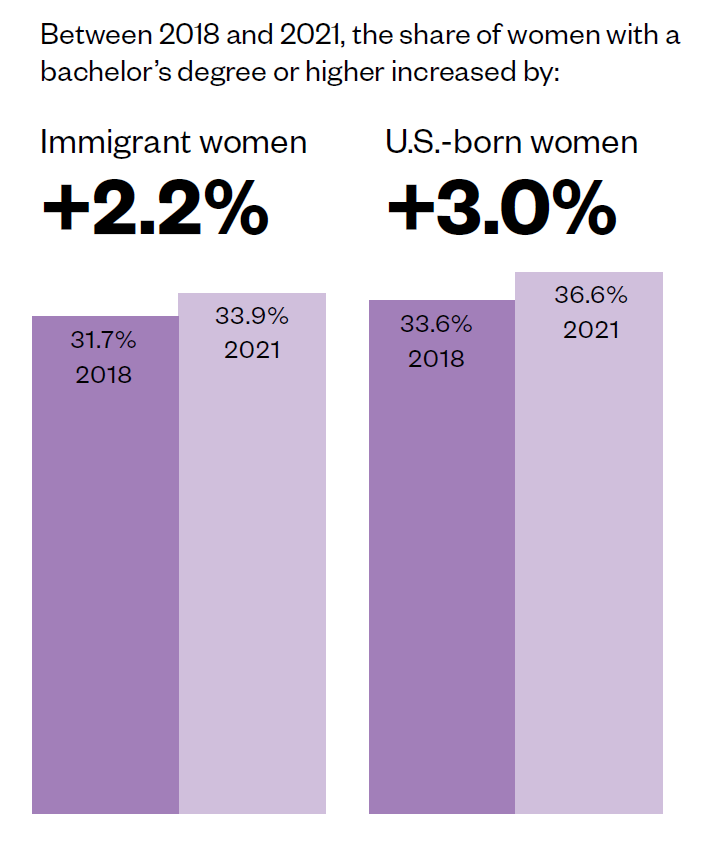
Labor Force
- U.S.-born women participate in the labor force at a slightly higher rate than foreign-born women. Among foreign-born women 57.0 percent participate in the labor force, compared to 58.7 percent of U.S.-born women.
- Immigrants account for 16 percent of the women currently in the U.S. labor force.
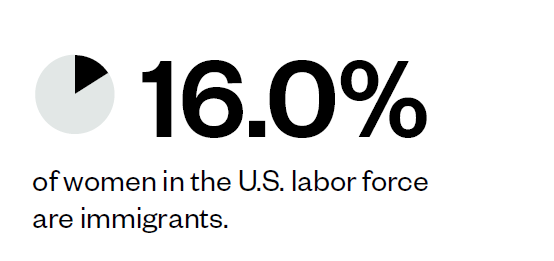
- The labor-force participation rate of immigrant women increased slightly from 56.6 percent in 2018 to 57.0 percent in 2021. In comparison, the labor force participation rate of U.S.-born women fell slightly since 2018, from 58.9 percent in 2018 to 58.7 percent in 2021.
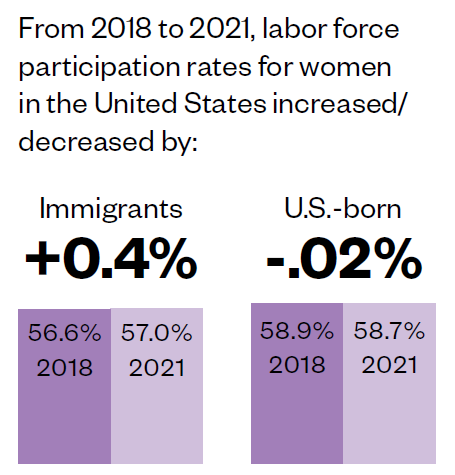
- Immigrant women are particularly vital in the Health Care and Social Assistance industry (23.3 percent of immigrant women), followed by Professional Services (13.3. percent), and Hospitality (9.7 percent).

- Among the top ten origin countries for foreign-born women:
- Women from the Philippines participate in the labor force at the highest rate (62.4 percent), followed by women from Colombia (62.1 percent), Dominican Republic (61.0 percent) and Vietnam (60.8 percent). Women from these countries as well as Vietnam, India, and El Salvador participate in the labor force at higher rates than U.S.-born women, whose labor force participation rate is 58.7 percent.
- While immigrant women from the Philippines are the most likely to be in the labor force (62.4 percent), women from Mexico make up the largest share of immigrant women in the labor force (2.7 million).
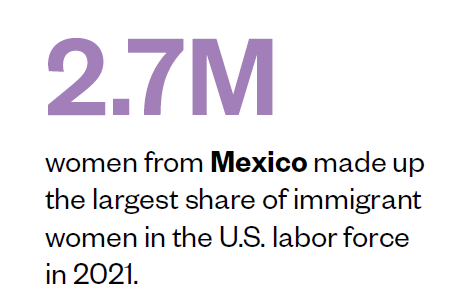
- Among the top 10 countries of origin, women from Cuba have the lowest rate of participation in the labor force at 50.8 percent.
- Women from El Salvador are less likely to have obtained an advanced degree (only 9.3 percent hold a bachelor’s degree or higher), yet they participate in the labor force at a higher rate than U.S.-born women.
- Women from the Philippines play a vital role in healthcare and social assistance in the United States. A large share (42.0 percent) currently works in this industry.
- The median household income for immigrant women is $59,900, lower than the median household income for US-born women at $64,300. Immigrant women also make less than their
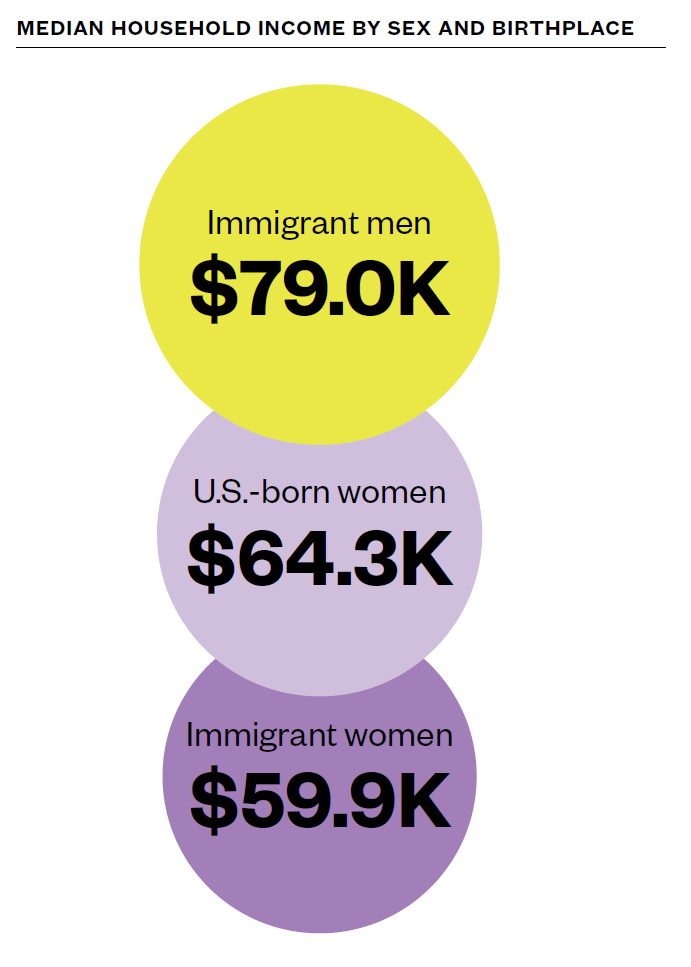
- Women from India had the highest median household income in 2021 at $123,000. They were followed by four other Asian countries: the Philippines ($97,000), Korea ($70,000), China ($67,000), and Vietnam ($65,000).
- Women from the Dominican Republic earned the lowest median household income at $40,000. Four other Latin American origin countries rounded out the bottom five for median annual household income among the top 10 origin countries: Cuba ($47,000), Mexico ($49,000), El Salvador ($51,400), and Colombia ($58,000).
- In all top countries of origin shared by both men and women, men earned more than immigrant women.
Appendix
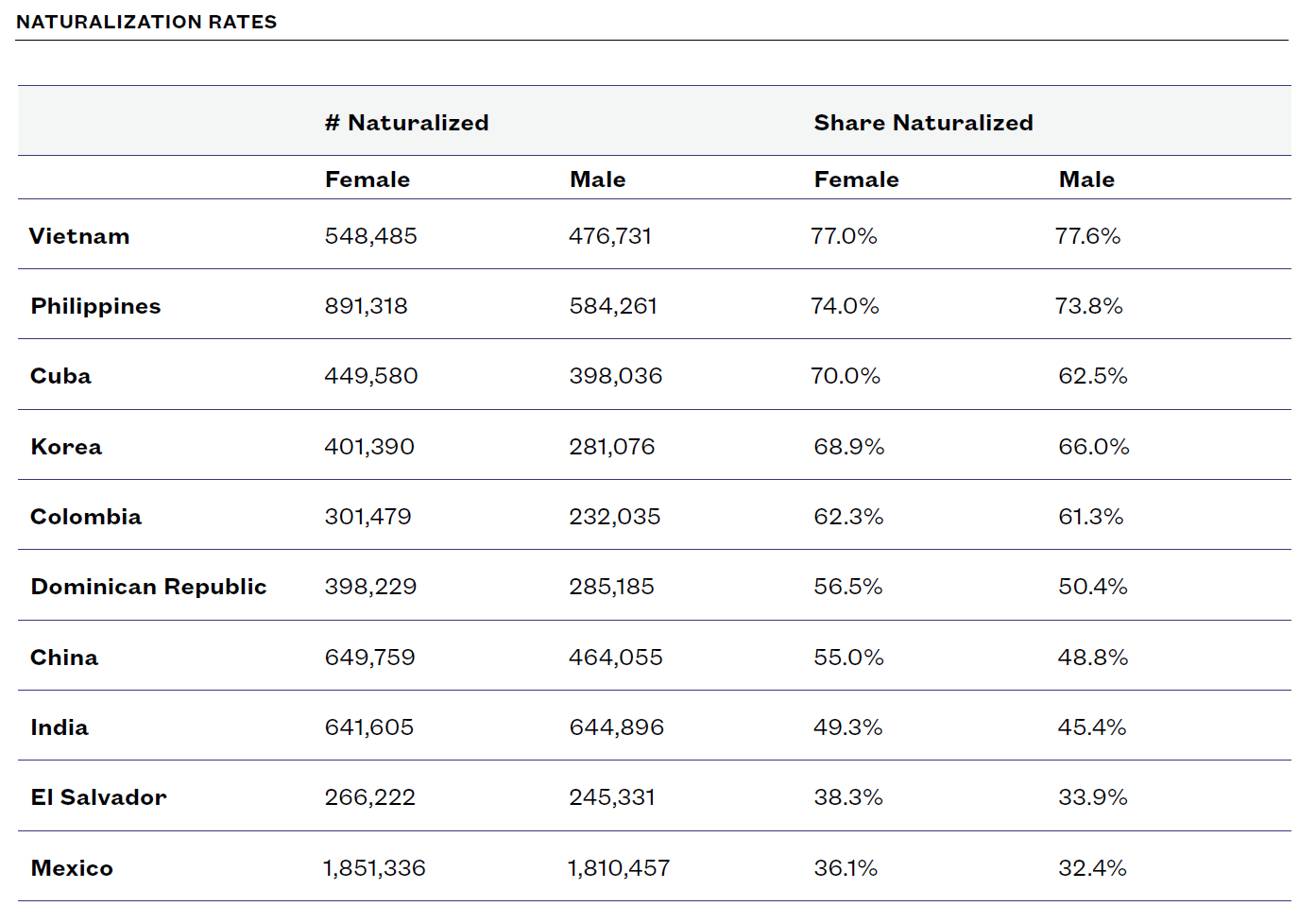
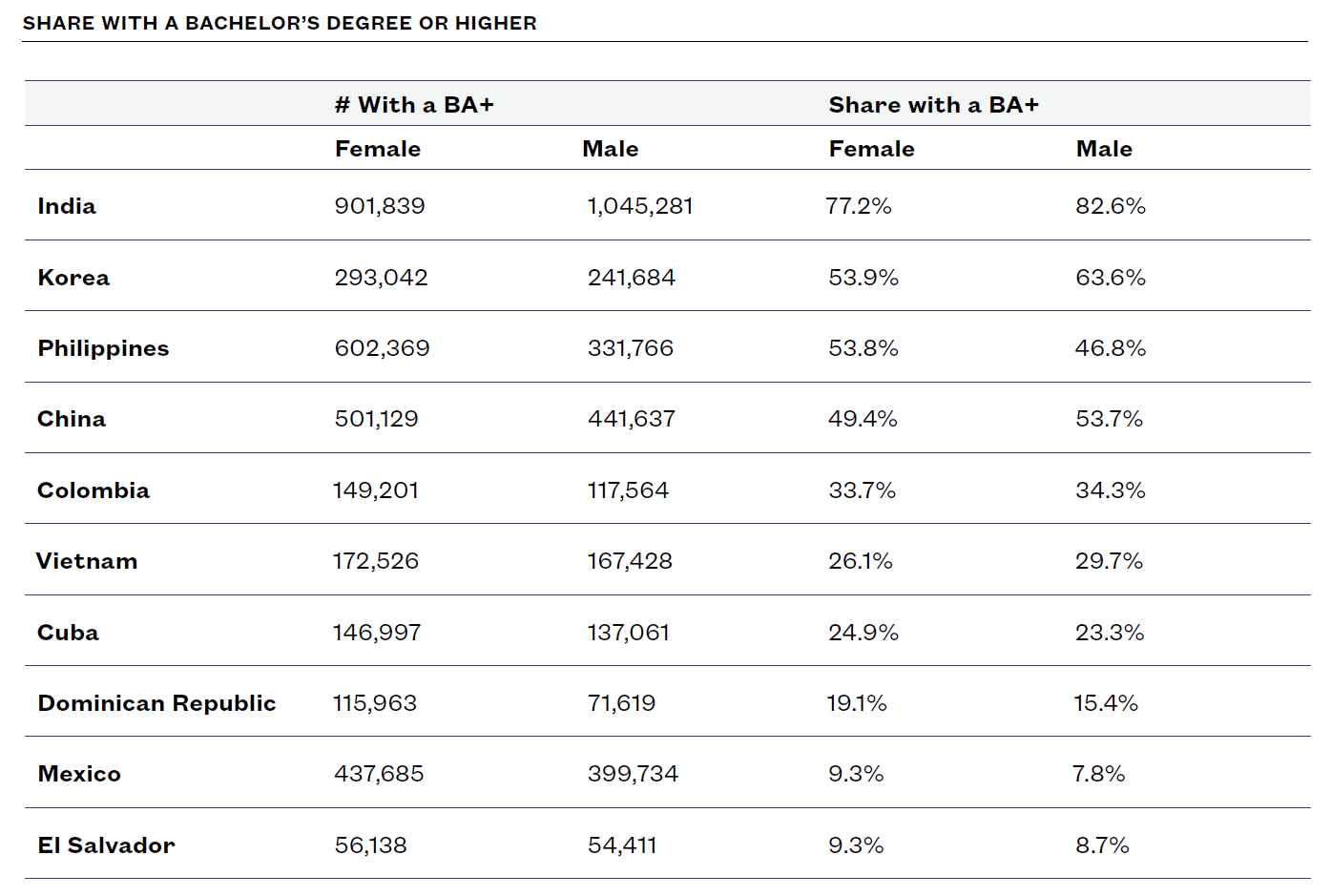
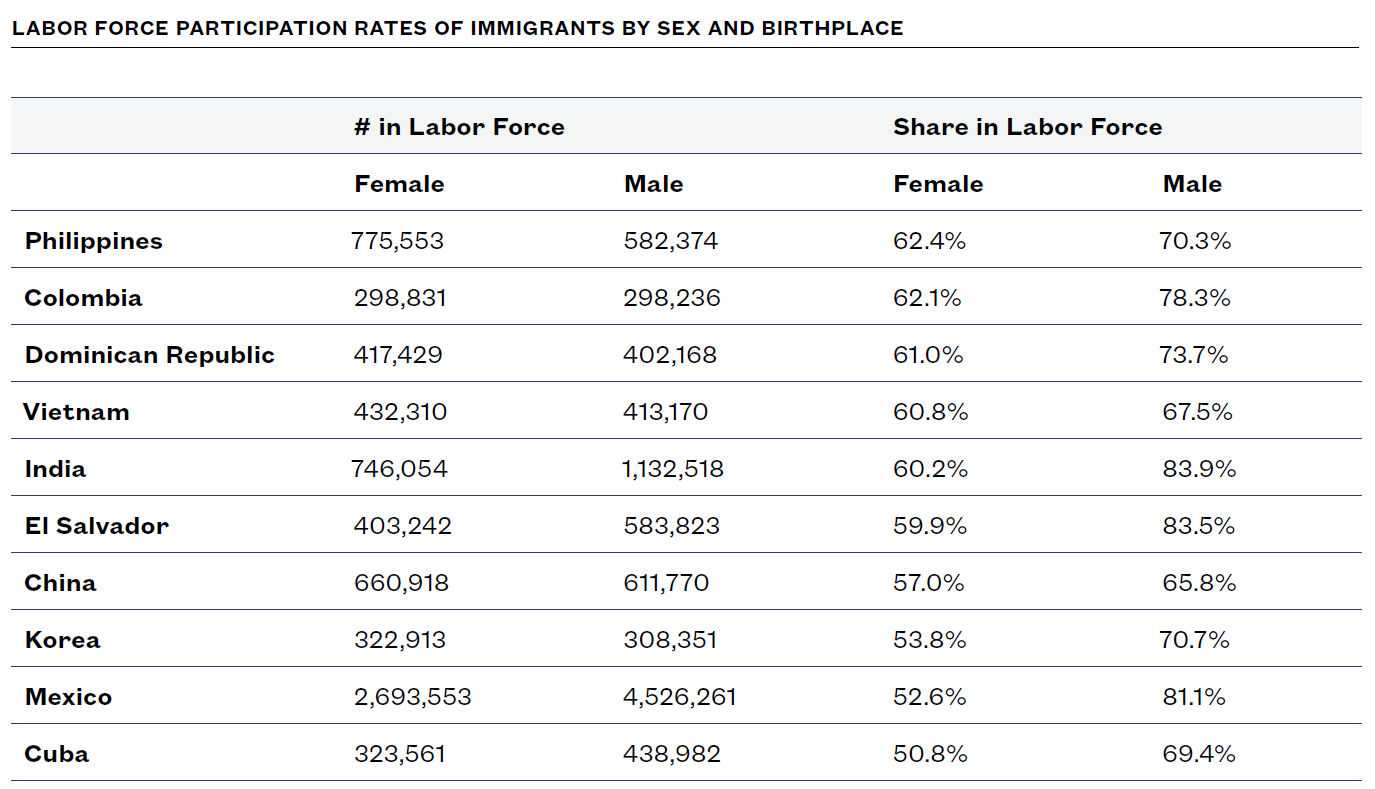
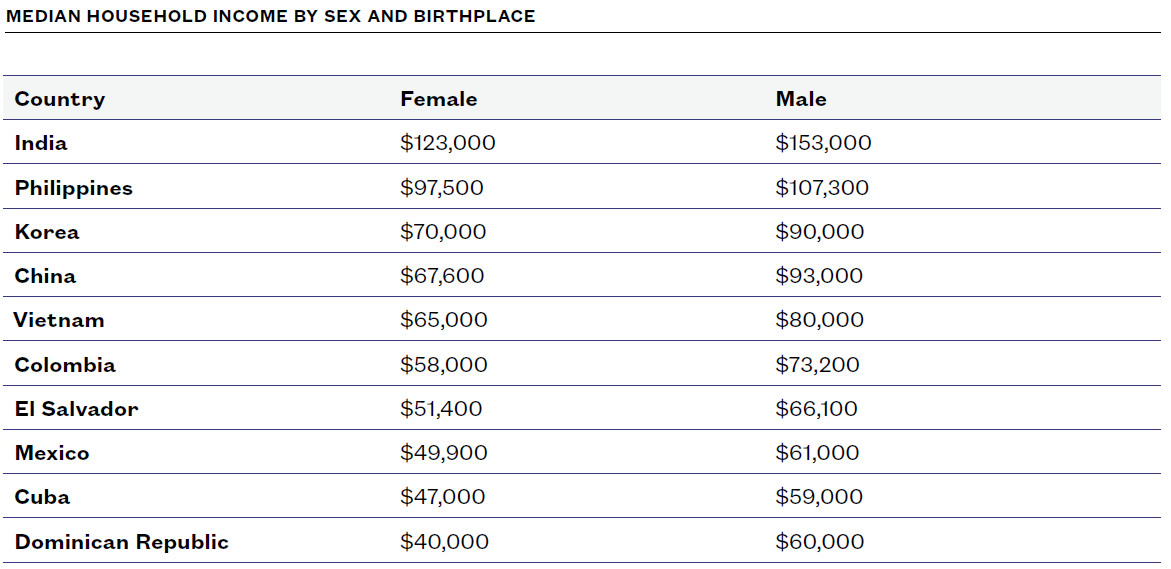
- Mexico is the single largest country of origin for female immigrants.
- Immigrant women outnumber immigrant men.
- Immigrant women are more likely than men to come to the United States through the family-based immigration system.
- Most immigrant women are naturalized citizens.
- Immigrant women from India are highly educated.
- The 12.7 Million immigrant women active in the United States labor force occupy roles across the educational and occupational spectrum.
- Immigrant women in the labor force earn less than any other demographic.
We can't let the government keep us in the dark.
Join us in demanding transparency and holding them accountable in court to protect our democracy.
Donate Now
